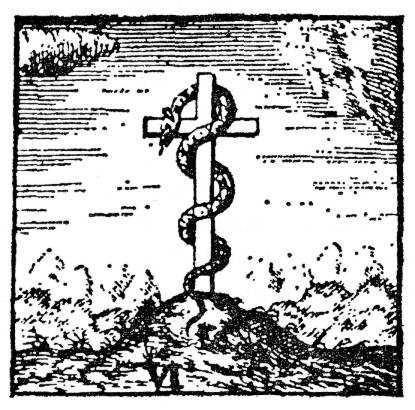The connections and relations between the Ancient Egyptians and Cretans have been well documented by the historians of yesteryear. I would like to add that I believe the Egyptians were also racially and politically connected to the Cretans through the Thebans.
As I have written before, Crete was called Keftiu and Peoples of the Sea in the Ancient Egyptian texts who were often represented by the Egyptians of the XVIIIth Dynasty. The Greeks in the Old Testament called Crete by the name – Kaftor, or Caphtor. The Latins called it Cappadocia and the Arabs called the island Kerith. This same island has also been known by various names over the course of history like Arcadia, Candia, Minoa, Phoenicia, and Phrygia etc.
Today, in the tomb of Rekhmire at Thebes, we can find proof of these Cretan (Keftiu) connections that are preserved even to this day and most great researchers concur that Keftiu to be synonymous with Crete.
Evidence of their relations can be found in the famous tomb of the Egyptian Vizier Rekhmire at Thebes where we find the Cretans wearing different color kilts bringing tribute to their Egyptian masters. Here is Detail of Keftiu (Cretans) from TT100, Tomb of Rekhmire. (Original photo via Osirisnet)

And here is another image of the Keftiu from TT100, Tomb of Rekhmire. (Original photo via Osirisnet)

Throughout the tomb of Rekhmire, there are various paintings of fine dark red-skinned Cretan men with both dark brown and blonde hair wearing their symbolic kilts of different colors signifying their various ranks. Some of the men also all wear the upturned sandals with straps, indicative of the Israelites along with colorful leggings.
You will also find some of their heads shaven and others with a full head of hair with a carefully designed curl flowing down to their waists which also help signify their rank. The High Priests wore their hair long and the lower ranks of scribes, musicians, masons, and artificers wore their hair short.
Today we see a similar tradition in Christianity with the Orthodox Priests of the East wearing their hair long and the Roman Catholic of the West wear their hair short.
In these images, we see the Cretans bringing the various products of their fine crafts mainly vessels of gold and silver, jugs, drinking cups, amphorae, and rhytons. They also provide the products they have obtained by trade such as ingots and rings of silver, daggers, chains and pieces of lapis lazuli.
The Tribute is piled up at the feet of the scribes who would make records for the Pharaoh and royal court.
In the text titles the “Instructions to the Vizier,” we discover that the Egyptian royal court at Thebes had relations with the Island of Crete (Keiftu) whom they also governed and taxed.
The text notes that the Prince of Punt is coming with his tribute bringing it to the Pharaoh. Coming after the Tribute of Punt we find the “Princes of Crete and the islands of the Mediterranean.”
The chiefs from Crete are “bent and bowing before the might of his majesty.”
The accompanying text reads, “Coming in peace by the Great of Crete, islands that are in the middle of the sea, bending, bowing of the head, because of the power of His Majesty, the King of Lower Egypt, Menkheperre, given life forever, on learning of his strength in all foreign countries, their tribute being on their backs, in order that they may be given the breath of life, desiring to be faithful (literally: to be upon the water) to His Majesty, to ensure that his power protects them. It is the confidant of the King, Mayor of the City, Vizier Rekhmire, who receives all the tribute of all foreign countries, which are brought due to the power of His Majesty.”
His image is completely erased. Facing left, he witnessed the tribute ceremony. The accompanying text states;
“Receiving the attendants of the Southern regions along those of Punt, the Retenu (Syria-Palestine) attendants, the Cretan attendants, along with the loot from all foreign countries foreign, which has been sent through power of His Majesty, the King of Upper and Lower Egypt (Menkheperre) | living forever, by the Prince, Governor, Great among Greats, Dignitary among Friends, Director of the chief Works, efficient confidant of the sovereign, the one causing he who is in the Palace to praise him and to place him at the head of (his) friends, and as top chief of the entire country, (because) he recognized (him) as one who achieved useful things. The example is for him; his venerable status is before him, the Mayor of the City, the Vizier Rekhmire”.
Rekhmire is followed by six officials (called ‘friends’ or ‘companion’s) each carrying in his left hand a plant branch. Above them is the text:
“Friends of the Palace – life, health, strength – coming before the Vizier, reciting prayers. They recite a joyous chant:
The sovereign, the one whose monuments are perfect.
Menkheperre Every office is upheld, regions and cities are established, laws and regulations are enduring for their effects.
The children of Dignitaries are in the office of their fathers May he continue (literally again)… to do the same for millions of years. He is durable and stable on the throne of Horus. May he come to repeat the Sed-festival.
May he guide the living for eternity”.
This text shows that they clear the way for the Vizier who leaves the throne room after the King’s speech. Behind them appears to be a person holding a stick who must have been a guard which has almost completely disappeared.

Moe is the founder of GnosticWarrior.com. He is a father, husband, author, martial arts black belt, and an expert in Gnosticism, the occult, and esotericism.








